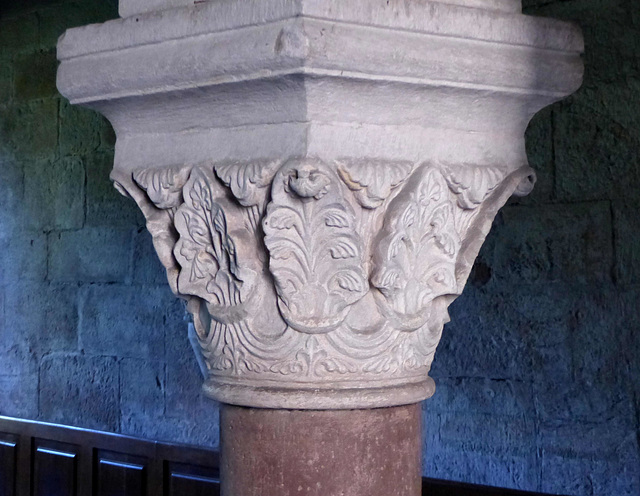Location
Lat, Lng: 51.075205, 21.015894
You can copy the above to your favourite mapping app.
Address: Kawiarnia Cysterska
You can copy the above to your favourite mapping app.
Address: Kawiarnia Cysterska
See also...
Keywords
Authorizations, license
-
Visible by: Everyone -
All rights reserved
-
73 visits
Wąchock - Klasztorny Cystersów


The monastery was founded in 1179 by Bishop Gedeon of Krakow as the 25th daughter monastery of the primary abbey of Morimond, from which the convent also originated. The church, dedicated to the Blessed Virgin Mary and St. Florian, was completed before the Tartar invasion of 1241. This invasion and subsequent Mongol raids destroyed most of the monastery, and most of the present Romanesque buildings were rebuilt in the late 13th century[4].
The Cistercian abbey flourished from agriculture and metal mining.
Another series of invasions, culminating in that of George II Rákóczi of Transylvania, left the abbey plundered and burned. The monastery was finally rebuilt in 1696. After the Congress of Vienna it was dissolved in 1819 and the church was transformed into a parish church. In 1951 the Cistercians from the Mogiła Abbey were finally able to return to Wąchock Monastery, and in 1964 the parish regained its former status as an abbey.
Large parts of the monastery got destroyed in medieval times. Most of what Romanesque work stands today was rebuilt in the late 13th century.
All columns of the chapter house have finely worked capitals.
The Cistercian abbey flourished from agriculture and metal mining.
Another series of invasions, culminating in that of George II Rákóczi of Transylvania, left the abbey plundered and burned. The monastery was finally rebuilt in 1696. After the Congress of Vienna it was dissolved in 1819 and the church was transformed into a parish church. In 1951 the Cistercians from the Mogiła Abbey were finally able to return to Wąchock Monastery, and in 1964 the parish regained its former status as an abbey.
Large parts of the monastery got destroyed in medieval times. Most of what Romanesque work stands today was rebuilt in the late 13th century.
All columns of the chapter house have finely worked capitals.
Andy Rodker has particularly liked this photo
- Keyboard shortcuts:
Jump to top
RSS feed- Latest comments - Subscribe to the comment feeds of this photo
- ipernity © 2007-2025
- Help & Contact
|
Club news
|
About ipernity
|
History |
ipernity Club & Prices |
Guide of good conduct
Donate | Group guidelines | Privacy policy | Terms of use | Statutes | In memoria -
Facebook
Twitter











Sign-in to write a comment.